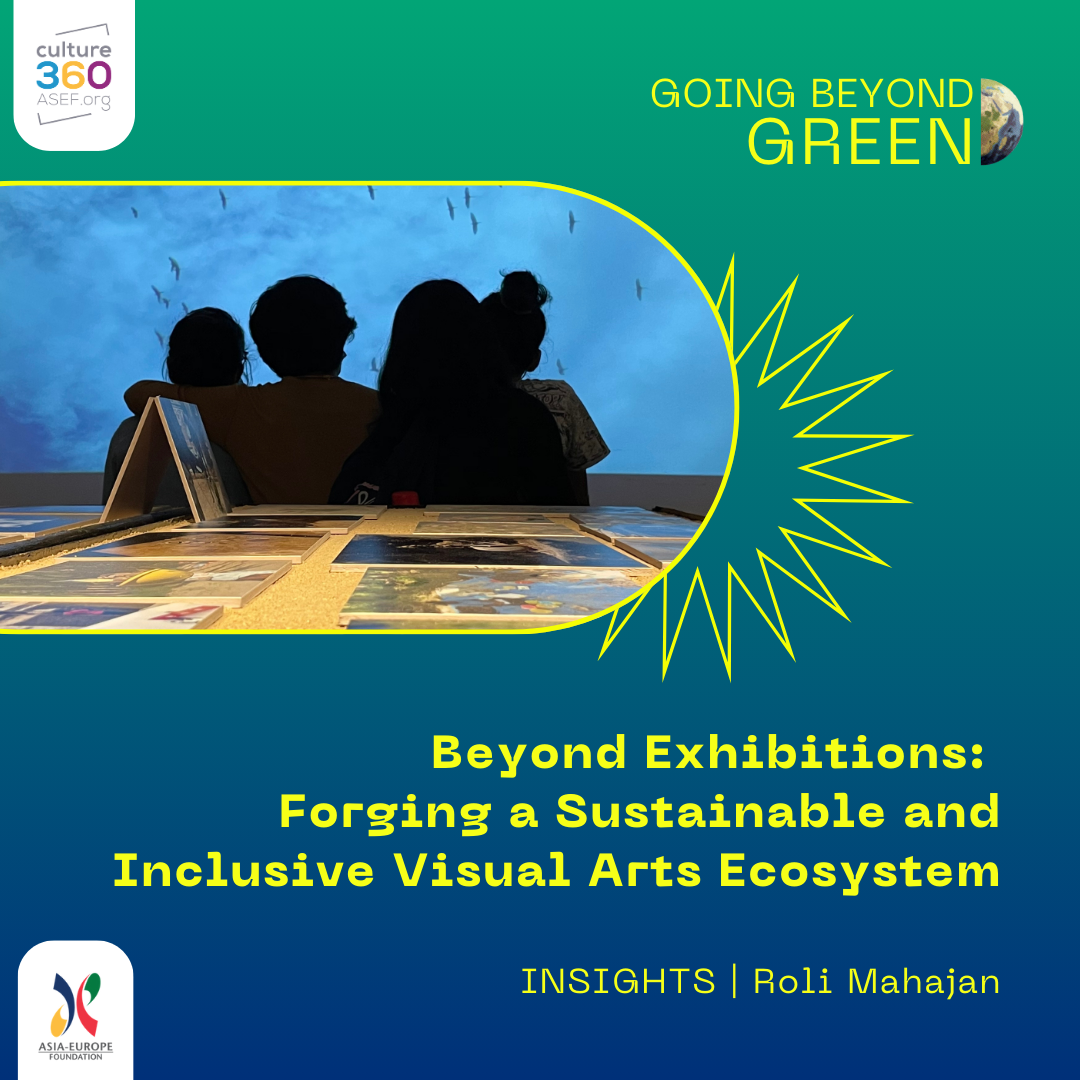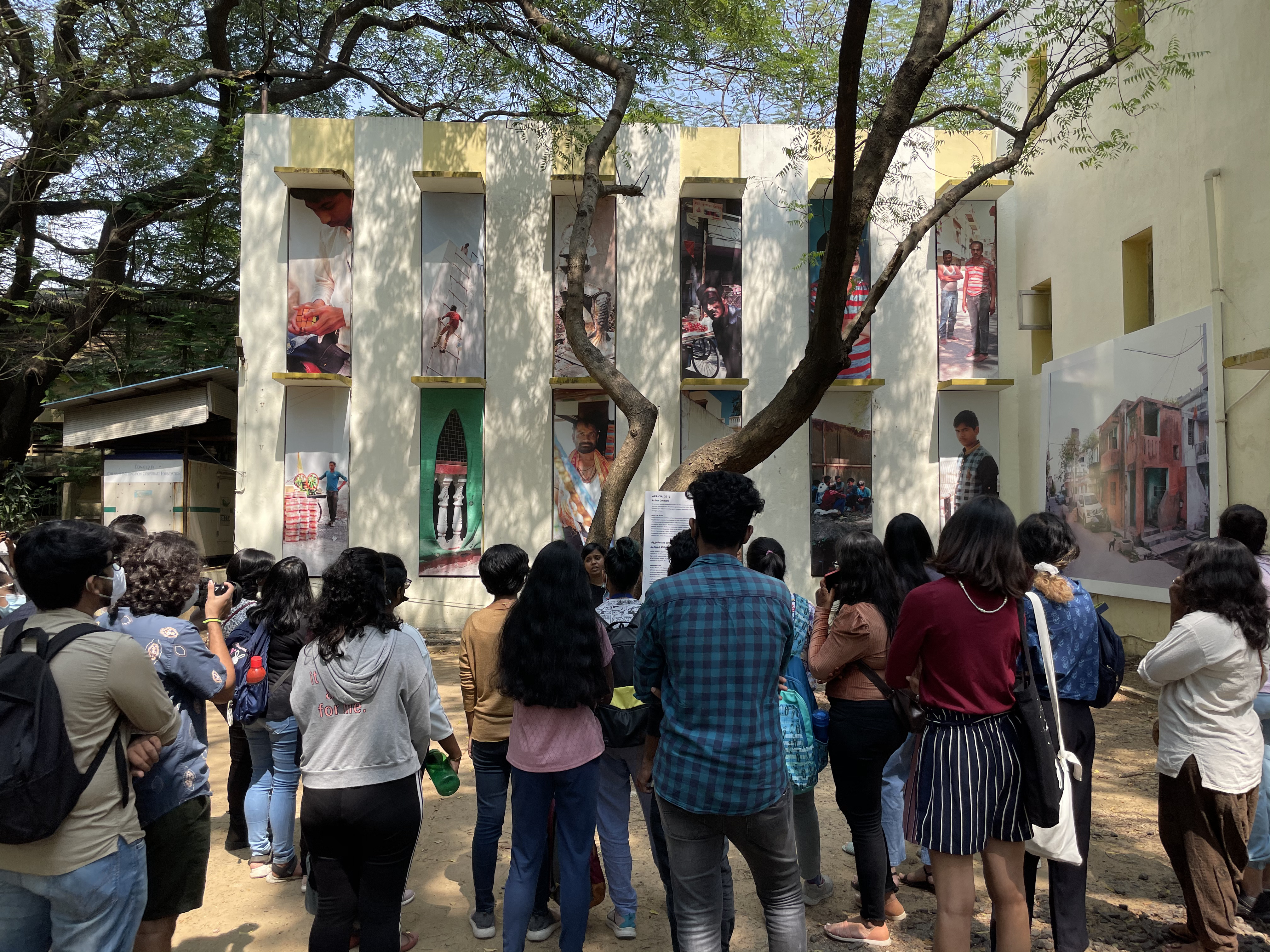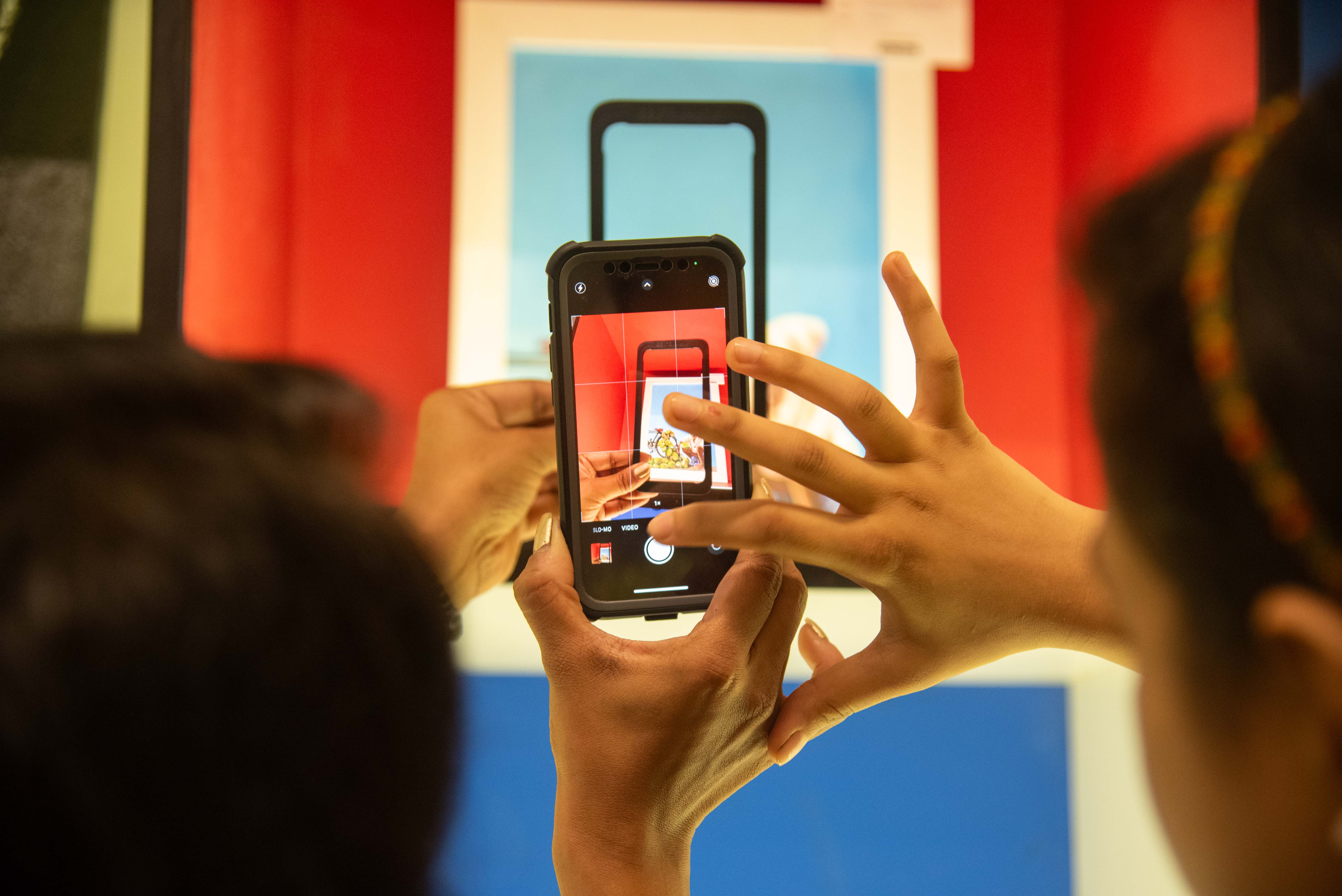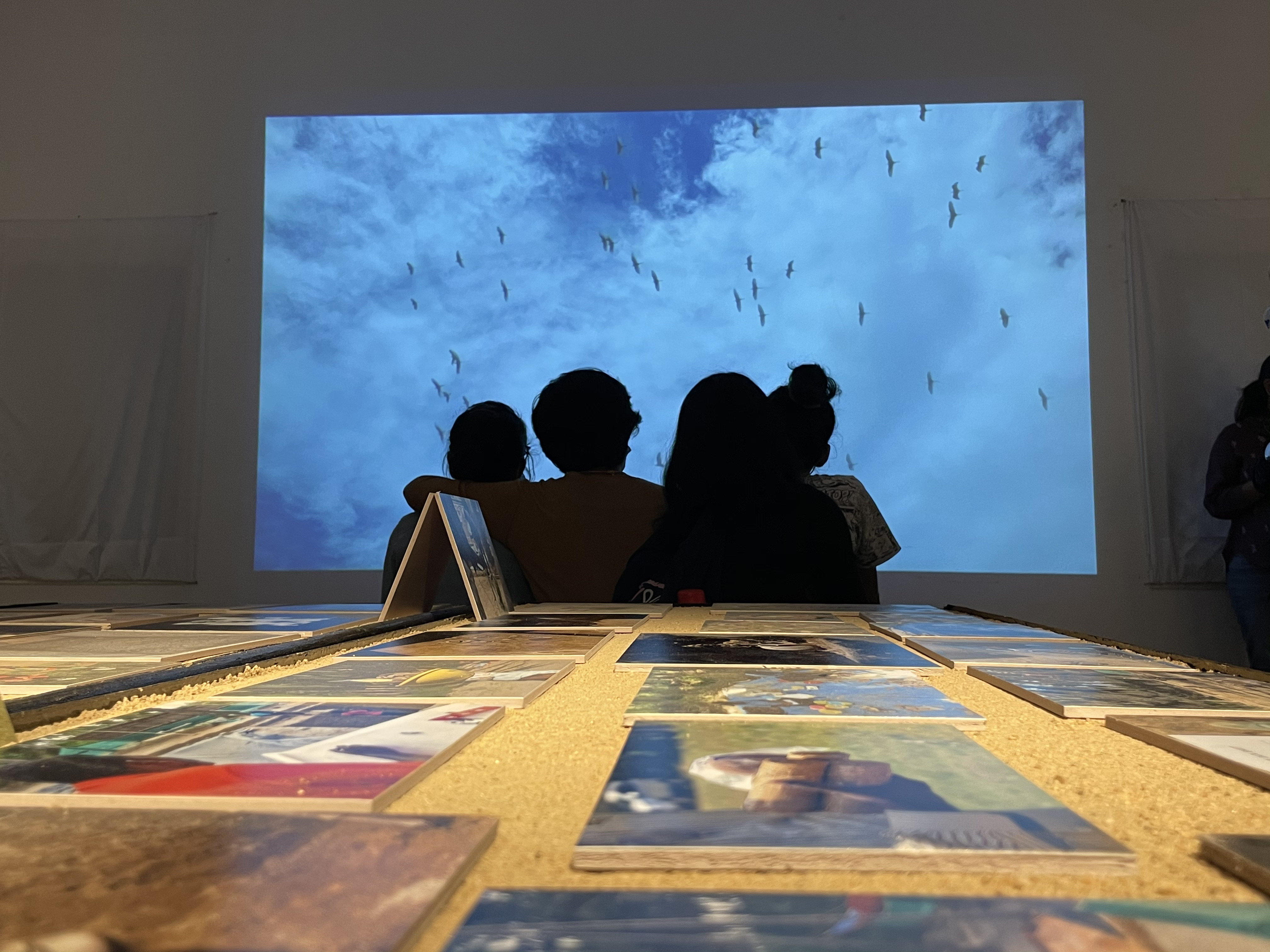Beyond Exhibitions: Forging a Sustainable and Inclusive Visual Arts Ecosystem

Roli Mahajan shares how the Chennai Photo Biennial (CPB) Foundation has been integrating sustainability in their programme over the years, focusing not only on the environmental practices in delivering projects, but also in creating more long-lasting impacts through education, inclusivity, and support to the visual arts community. Despite financial challenges, CPB is committed to fostering a more sustainable arts ecosystem in India, Asia and beyond.
This article is commissioned as part of culture360.ASEF.org's Going beyond 'green' open call. Through a series of articles and podcasts, we look at various endeavours, insights and trends that broaden the discourse of sustainability beyond the environmental aspect within the arts and culture sector.
The Chennai Photo Biennial (CPB) Foundation is best known for its namesake event: a vibrant showcase of contemporary photography that transforms the South Indian city of Chennai every other year. However, the organisation’s impact extends far beyond those intense weeks of exhibitions. Through a network of educational programmes, community initiatives, and artist support, the Foundation is nurturing a more sustainable and inclusive photography ecosystem in India, challenging conventions and expanding access to this democratic art form.
The Beginning: From Friends to Founders
CPB Foundation’s journey is deeply rooted in friendship and a shared vision. The three founders are freelance photographers from diverse backgrounds: Shuchi Kapoor, a documentary photojournalist; Varun Gupta, a travel and commercial photographer; and Gayatri Nair, a wedding photographer. Despite their differing paths, they found common ground in their love for the medium of photography and their desire to do something for Chennai, the city that they now called home.
“There was a gap in India’s visual arts landscape. Despite the rich art culture, photography was overlooked in Chennai’s art scene while at the national level, South India was often underrepresented at photo-festivals. So, we knew what we had to do,” Shuchi tells ASEF.
She adds, “We wanted to celebrate photography by bringing this art form into the everyday lives of Chennai’s residents.”
This led to the launch of the First Edition of the Chennai Photo Biennale in 2016. Supported by the Goethe Institut Chennai and a network of cultural partners and patrons, the first edition featured installations in parks, train stations, and of course, some art galleries.

1. The 3rd Edition of the CPB in full swing. © CPB Foundation
Growing Beyond the Biennale
Photographers from around the world responded enthusiastically, recognising the value of this artistic platform in a new city while the audience showed a keen interest in discovering the possibilities of photography. However, this was just the beginning.
The three co-founders realised that the enthusiastic response to the first Biennale highlighted the need for more such gatherings. Motivated to make a lasting impact, CPB expanded its vision beyond the event modality.
Consequently, the CPB Foundation was established in 2017, aiming to create year-round programming that would cultivate local talent, break down different barriers, foster a more connected photography community and build a more sustainable arts ecosystem. This led to the birth of several initiatives, including CPB Prism, which focuses on arts education in schools, and the CPB Learning Lab, launched to bridge the gap between photography enthusiasts and professionals.
Fostering Visual Literacy and Inclusion
“Art history often takes a backseat in our education system, leaving little room for exploration or recognition of newer art forms like photography,” says Uday Isaac Gnanadason, Associate Director, Education, CPB Prism. “We wanted to change this by creating programmes that introduce young people to the arts, particularly in communities where access is limited.”
CPB has worked with educational institutions in South India, bringing photography to rural villages and under-resourced institutions. CPB’s Prism project has created resources that have been distributed across India and can be used even in areas with limited access. It focuses on public-sector schools often neglected by arts organisations, touching the lives of around 100,000 children. Prism goes beyond technical skills, encouraging students to explore themes of self-discovery, community, and social issues through the lens.
CPB also runs initiatives like Hey! Visual Storytelling Workshops, which support individuals with neurodivergence and intellectual or physical disabilities, while the Kanavu Fellowship equips women photographers with storytelling skills, which gives their professional lives a boost. CPB also champions diversity with groundbreaking queer art exhibitions.

2. CPB organises workshops for individuals with disabilities and neurodivergence. © CPB Foundation
The Biennale: A Platform for Visibility and Dialogue
While the CPB’s educational and community initiatives form the backbone of its sustainability efforts, the Biennale itself remains a crucial platform. The event showcases a curated selection of work from India and around the world, attracting a diverse audience including seasoned art enthusiasts and those experiencing contemporary photography for the first time.
CPB has made a conscious effort to move away from the traditional, often exclusionary, format of Biennales. The curatorial approach embraces diversity, featuring a mix of established names and emerging artists, with a particular focus on local talent and voices often marginalised in the art world.
The Foundation’s dedication to representing diverse artistic voices is exemplified by their decision to showcase exhibitions like Shared Tides, stories from Tamil Nadu and Sri Lanka beyond a conflicted past or the upcoming prominent LGBTIQA+ artist Sunil Gupta's retrospective, the first large-scale public exhibition of queer art in India. The spotlight on Gupta's work, an exploration of identity and sexuality, is a significant step towards greater representation of socio-political issues in the Indian art landscape.
Jaiveer Johal, a patron and art collector, praises the foundation’s commitment to inclusivity. “CPB Foundation is not just about the once-in-a-two-year event. There is a lot of community engagement that happens between the two Biennales. It gets the non-museum goer involved.”
Commitment to Sustainability
CPB recognises the need to support artists beyond the Biennale. The Foundation provides platforms for emerging artists, offering valuable exposure and networking opportunities. By commissioning new works and providing resources for professional development, CPB aims to equip artists with the tools and connections necessary to thrive in the long term.
The Foundation strives to minimise its environmental impact through conscious material choices. It aims to utilise sustainable materials for its exhibitions and seeks ways to repurpose or recycle materials whenever possible. Vasant Naik, a patron, notes that the foundation is designing exhibitions for reusability and trying its best to extend the lifespan of materials.
However, financial sustainability is a challenge for CPB like many arts organisations in India. "The Biennale itself doesn't make money," Jaiveer explains. "At the end of the day, CPB needs money and patrons need to put their money where their mouth is.”
Currently, CPB relies primarily on project-based grants and patron support. It is exploring innovative strategies to ensure its financial stability and has implemented a patrons' program, encouraging individuals to support specific initiatives such as its educational, community engagement, disability and inclusion initiatives. This approach fosters long-term relationships with supporters and provides more consistent funding streams.

3. Children explore photography as a lens for self-discovery through CPB's Prism project. © CPB Foundation
Looking Forward: Building Bridges Globally
As CPB continues to grow, its founders remain committed to fostering a visual arts ecosystem that is inclusive, intersectional, and sustainable. By providing platforms for underrepresented voices and creating pathways for educating future artists, the foundation is helping to shape the future of contemporary photography in South Asia—and beyond.
About the Author
Roli Mahajan is a freelance writer and photographer. She has worked as an editor, journalist, storyteller and development communications professional for more than a decade. She is passionate about the environment, pursuing peace and learning more about culture. She can be reached at roli.learns@gmail.com
